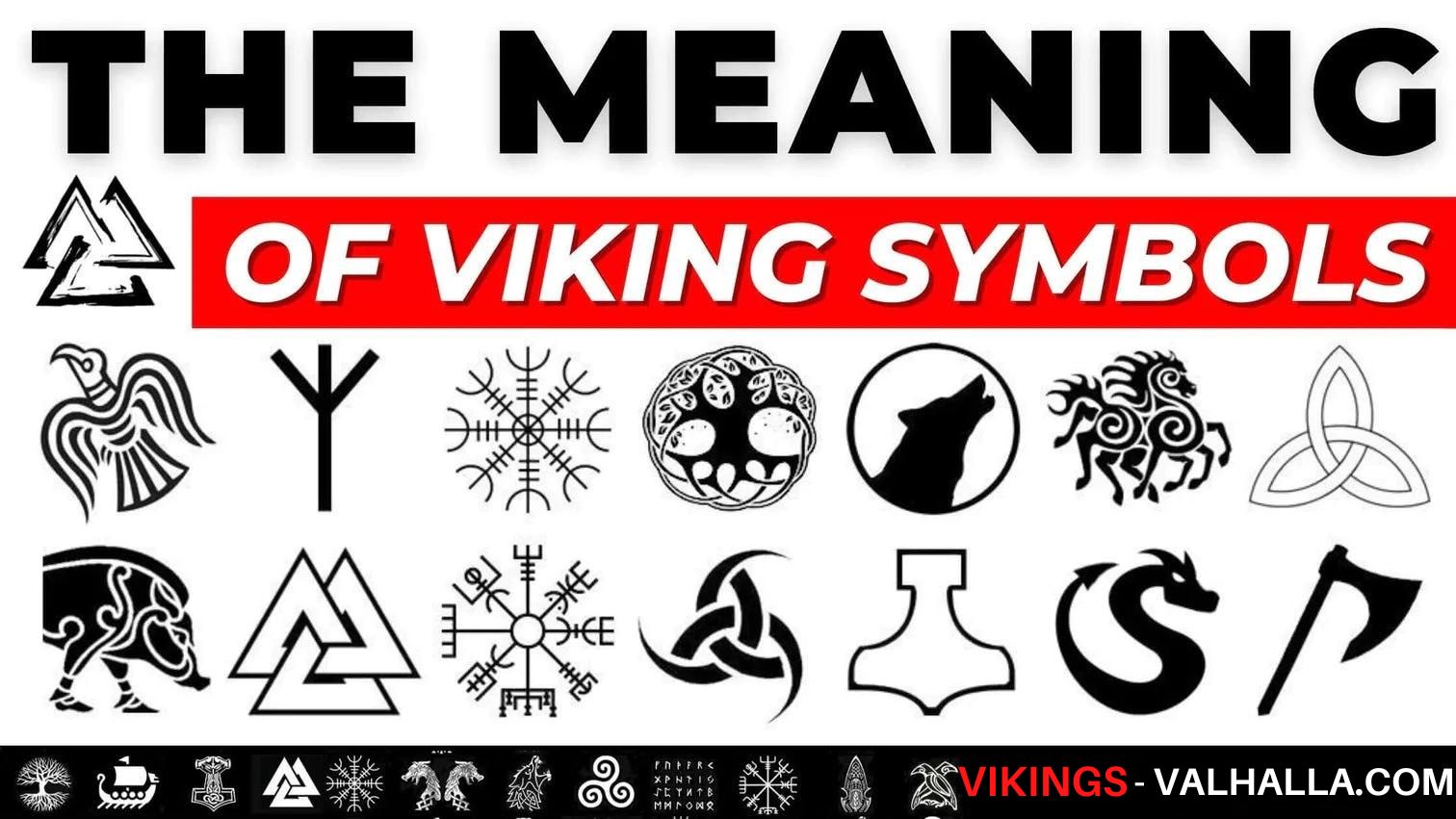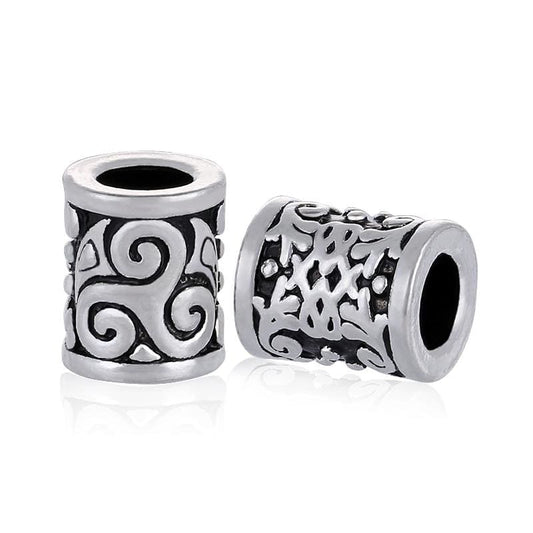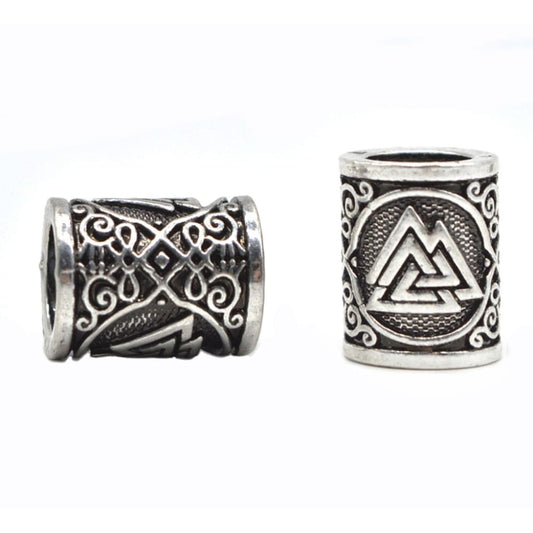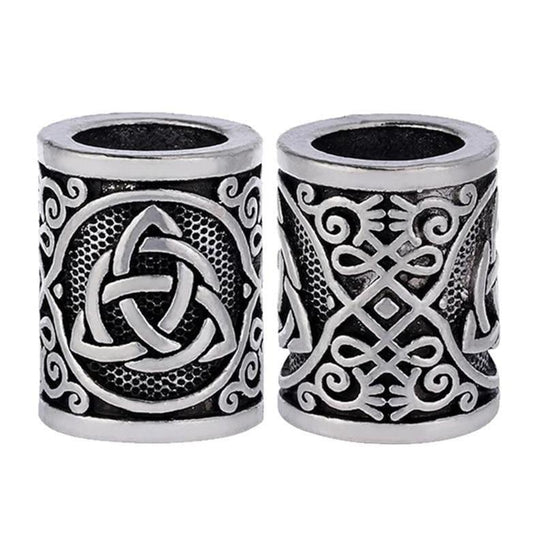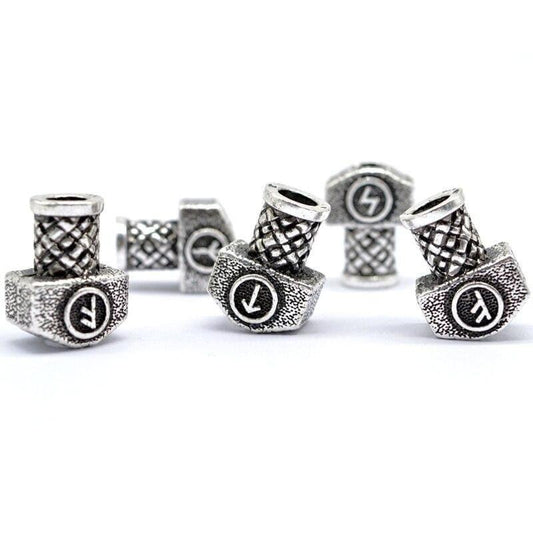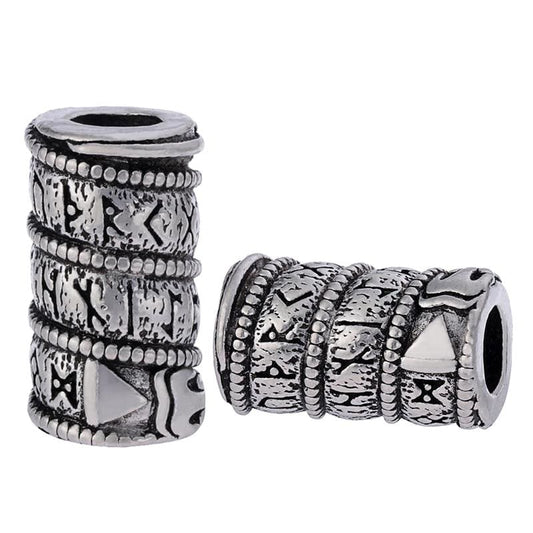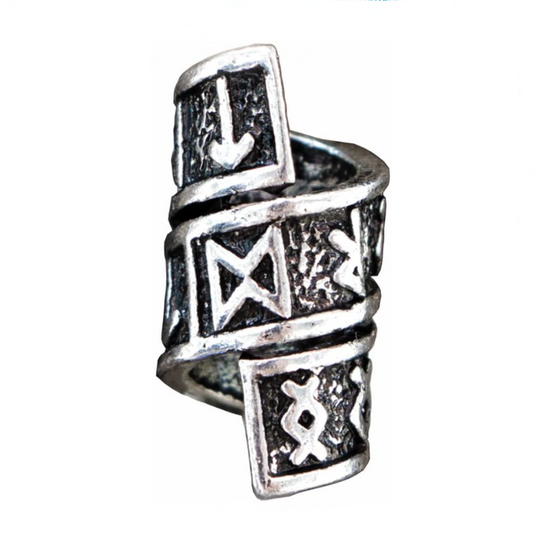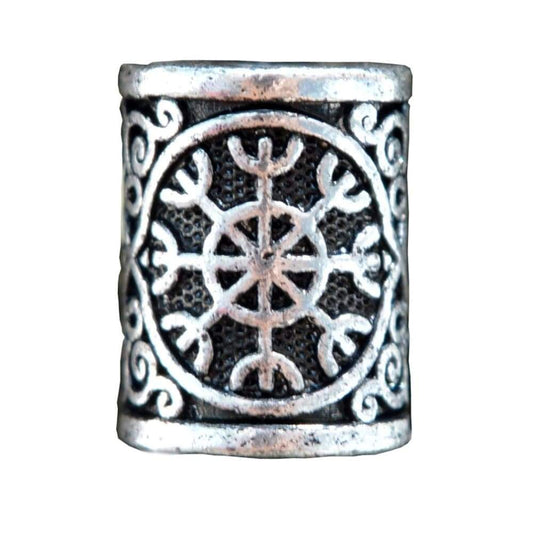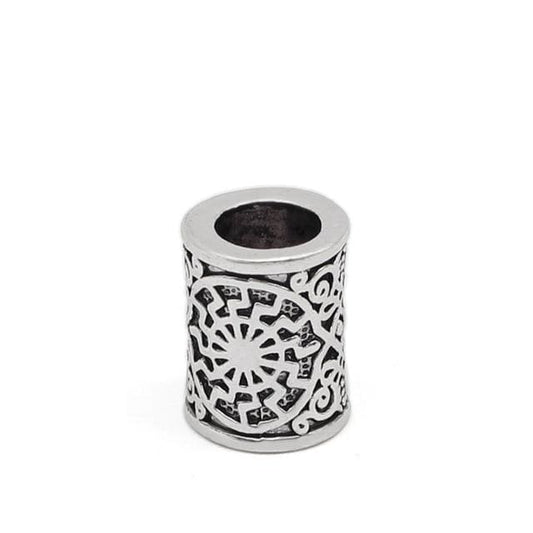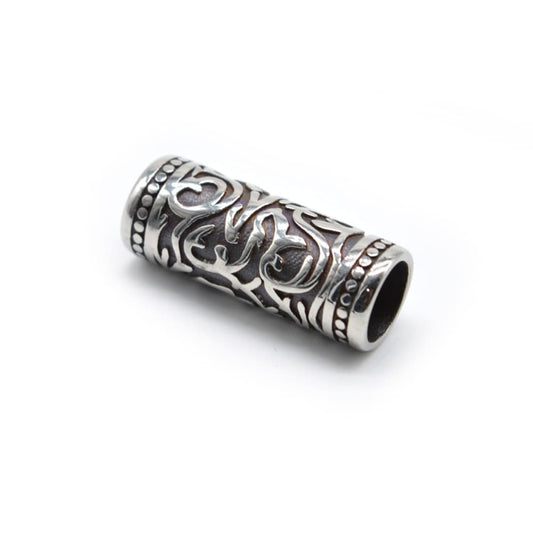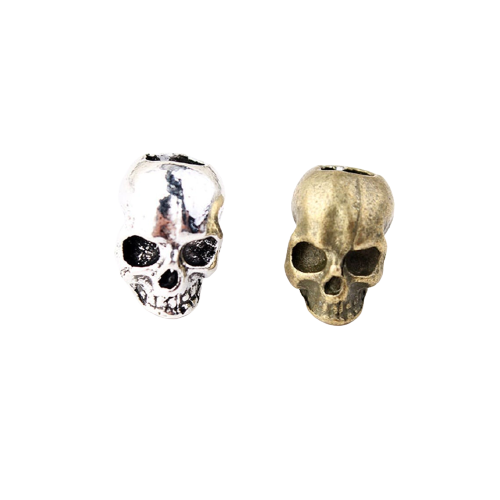The ancient Norse and Germanics called priestesses and seeresses "völva" ("vala" or "wala" in Old High German). The terms "seiðkona", "spákona" in Norse, "spaewife" or "wicce" (generic term for witch) in Old English are used for women practicing at least one of the Nordic magics. They are recurring characters in Germanic mythology.
Etymology of Volva
The word "völva" is said to come from vǫlr, cattail. This word is to be compared with the proto-Germanic *walwōn, which will give wand in English. The völva (masculine völvo, plural völur) would thus be, like the Norns, a cattail bearer.
The völur, among other traditional esoteric disciplines, practiced seydr (enchantment), spá (prophecy) and galdr (runic magic, shamanism). In this case, they were called fjölkunnig, those whose knowledge (kunne) is whole or full (fjol).
For those who only practiced spá, we speak of spákona or spækona, an Old Norse term for a woman who practiced prophecy or predicting the future. In Old English, it is also referred to as spæwīfe.
This word is said to come from the Proto-Germanic *spah- and a Proto-Indo-European root *(s)peḱ (to look, observe, see) and therefore related to Latin specio ("(I) see") and Sanskrit spáçati and páçyati ("(he/she) sees," etc.). Men practicing the latter discipline were called spámaðr. Similarly for seiðr, one speaks of seiðkona (woman) or seiðmaðr (man).
According to mythology and historical accounts, the völur were supposed to possess such powers that Odin himself, the father of the gods, called upon their services to know the future of the gods: this is notably what is reported in the Völuspá, whose title itself, "völv-s-spá", translates as "song of the prophetess".
The distaff is called seiðstafr, "seydr's staff". (magic wand in short). It is one of Freya's attributes and a tool of the völva.
Historical Accounts of Volvas
In his Commentaries on the Gallic War, Julius Caesar, about the fight against the Germanic chief Ariovistus (58 BC), writes this:
"When Caesar asked the prisoners why Ariovistus had not fought a full-scale battle, he learned that the reason was as follows: it was a custom among the Germans for the mothers of the family to decide, after having consulted the signs and rendered the oracles, whether or not to engage in combat; now they said that fate would not allow the Germans to win, if they engaged in combat before the new moon."
- Comments on the Gallic War, book 1, ch. 50
The writings of Tacitus (1st and 1st centuries AD):
The first mentions of these Germanic prophetesses come to us from the Latin historians evoking the exodus of the Cimbres: under the pen of Tacitus, these "priestesses" are old women; they are dressed in white. They immolate prisoners of war and consecrate the blood spilled (the so-called Blót ceremony), an indispensable fluid for divination.
Tacitus also describes the prophetesses of the Germans in his Histories (book 4, chap. 61), and in particular a certain Veléda: "[...] an ancient practice among them, the Germans attributed the gift of prophecy to women, and even, as superstition developed, a divine status."
Jordanes mentions in his Genetics (XXIV:121) völvas Gothes called Aliorumnas. They were exiled by order of King Filimer, when the Goths settled in Ojum (Ukraine). This name is probably a corruption of the gotic Halju-runnos [archive], i.e. catabantes or "those who descend to the Underworld" (allusion to the trances of the shamans). These völvas found refuge with the Huns.
Paul Diacre describes in the seventh century how, during a war between the Vandals and the Lombards, the Vandals turned to Odin (Godan) to obtain victory. The mother, Gambara, of the two Lombard clan leaders, Ibor and Aio, turned to Frea (Freyja/Frigg). So Frea, thanks to the good relations between the goddess and her Völva, helped Gambara to deceive Odin and that is how her people won the war.
A detailed description of a human sacrifice by a Völva is due to the Arab diplomat Ahmad ibn Fadlan who tells of one of his missions to the Volga Bulgars in 921: during the funeral of a Vareg chief, a slave girl sacrifices herself to be buried with her master. After ten days of festivities, she is stabbed by a priestess (the Arab diplomat calls her the Angel of Death) and her body is cremated with that of her master in a ship.
In the Landnámabók, a Völva named Þuríðr Sundafyllir is mentioned who fills a fjord with fish to counter a famine. This is considered a historical fact in the Landnámabók.
Volvas In Scandinavian folklore
In ancient Scandinavian society, the völva was an elderly woman who had broken away from the heavy family ties that were the lot of women in this clan-based civilization. She wandered through the country, traditionally followed by a group of young men. Her services were called upon in serious situations. Her authority was absolute and she was paid handsomely for her services.
Among the most famous völvas in Scandinavian literature are the Heidi of the Völuspá and the witch Gróa (Growth) of the Svipdag lai (Svipdagsmál).
In the Hyndluljóð, the goddess Freya (goddess of the Völur) meets the Völva Hyndla and they go together to Walhalla. Nevertheless, other sagas mention Völvi including Þórbjörgr in the Saga of Eric the Red and Huld in the Ynglinga saga.
In Baldrs draumar, a Völva is consulted to explain Baldr's dream.
The Galdr and the Spà will end on the day of Ragnarök.
The Volvas Ritual
Initiation
In Grógaldr ("The Incantation of Gróa"), the conditions of an initiation are mentioned as Volvo. Svipdagr is sent to an impossible task by his stepmother Skaði, he has to find the access to Menglöd's room (Menglöd means "the one who owns a jewel", a kenning for Freya, owner of the Brisingamen).
Svípdagr then asks for help from her dead mother Groa, a Völva ("Awake, Gróa, Awake, excellent woman, I awake you to the gates of death, [...]").
She wakes up from the world of the dead to incant nine formulas of protection and says that even Skuld, one of the Norns, will be satisfied with this. The nine incantations are chanted from the "rock of the earth". They consist of:
- freedom from pressure, go your own way without guilt (the song of happiness that Rane sang for Rind);
- self-control to the thunderbolts of Urd (the vicissitudes of life);
- insensitivity to the powerful currents that lead to the realm of the dead, the waves will go to Hel (Hell);
- the ability to change enemies into friends and to change negative character traits into positive ones;
- the magic sword that breaks all chains;
- the help of the elements of nature;
- resistance to the "icy cold of the high mountains";
- protection from the shadow of a Christian woman (Svipdagr is a man);
- the knowledge of emotional words for an exchange with the "giant with the spear".
Seiðr Ritual
In the saga of Erik the Red, it is told how the Völva Þórbjörgr, or Þorbjörg Lítilvölva, performs a seiðr. Before her arrival, the house is cleaned from top to bottom.
The large chair, usually reserved for the master of the house or his wife, was decorated with cushions. When the Völva enters the room, she is greeted with reverence by the household and led to the high seat. There she is presented with a meal prepared just for her.
It is a porridge of grain and goat's milk, and a stew made with the heart of a representative of all the animals in the house. She eats the dishes with a copper spoon and a blunt knife.
The Völva is accommodated for the night and the next day was reserved for her dance. To dance the seiðr, she needs certain tools. First, a special platform was built for her. A group of young women sit around her. The young women sing a special song to summon the powers with which the Völva wishes to communicate.
In an Icelandic law from the thirteenth century, seiðr is referred to as útiseta at vekja tröll upp ok fremja heiðni ("útiseta (sitting outside) to wake up trolls and perform pagan rituals"). This activity was punishable by death. As late as 1854, there is talk of "a specific witchcraft [...] where the magician spends the night in the open [...] especially to predict the future."
The ritual outfit
In the saga of Erik the Red, which takes place in Greenland, the Völva appears in a blue or black cloak with jewels encrusted on the edge. The cloak falls to her feet. In her hand she holds the seiðstafr, which is made of copper and covered with semi-precious stones on top. In the Örvar-Odds saga, the seiðkona also wears a blue or black coat and carries a seiðstafr.
In the Erik the Red saga, a necklace of glass beads and a headdress made of black sheepskin and white cat skin are also mentioned. She wears a belt with a pouch containing the tools of the seiðr.
She wears cowhide shoes with copper-tipped laces and white cat skin gloves with the fur turned inwards.
The seiðstafr
The seiðstafr is a distaff, symbolic or actual, made of copper or wood. This distaff is the symbol of the Völva's magical power. Whoever is hit with this stick three times on the cheek loses his memories.
Invisible links could be woven between the balsam of the loom and a human being (e.g. a warrior). When a witch undid a knot in her work, she could, for example, untie a limb of a warrior-hero (arm or leg).
This also refers to the "tying of the needle" where the manly member is immobilized. When she tied a knot, she could stop the advance of the enemy army, because in Norse mythology, it was Freyja who started the first war. It is therefore up to the völur to decide the beginning or the end of the war with their magic. This is probably the reason why Harald I of Denmark, at war with the Eastern Roman Emperor, kept a völva in Fyrkat.
The cattail here refers to the Norns and their magical powers. In Helgakviða Hundingsbana I, women generally interpreted as Norns arrive at Helgi Hundingsbane's cradle and weave him a future as a hero. It is possible that these characters are not Norns, because they are never named as such, but Völur.
Many of the cattails found in the tombs have a kind of small basket at the top, perhaps used for spinning flax. Taking into account that the word seiðr could be translated as "thread woven with a cattail", practicing magic can be considered as weaving spiritual threads.
The notion of "distaff side" was used in England until the nineteenth century to indicate maternal lineage (daughter of X, daughter of Y). For the paternal side, it was called "sword side" or "spear side".
The devoted gods of the Volvas
Freya
The goddess who deals with magic is above all Freya. She is the goddess most referred to when speaking of the Völur.
Freyja is identified as such in the Ynglingar saga and it is also stated that she taught Oðinn:
"Dóttir Njarðar var Freyja. Hon var blótgyðja. Hon kenndi fyrst með Ásum seið, sem Vǫnum var títt."
"Daughter of Njǫrðr was Freyja. She presided over the sacrifices. It was she who first introduced the seiðr to the Æsir because she was already known by the Vanir.
Sif
In the prologue of the Prose Edda , a Völva explains the origin of the goddess Sif, wife of Thor. It is explained that she was a spákona.
Odin
It was Freya who taught Odin the seiðr. Even as a warrior god, he is weaker than Freya in the magic of war. In Paul Diacre's account (above), the Vandals turn to Odin (Godan) for victory but the Lombards, who turn to Freya through the queen mother, win.
On the other hand, in the Rúnatal, a section of the poem Hávamál, the discovery of runes (and their magical properties) is attributed to Odin. He is therefore a magician in his own right.

